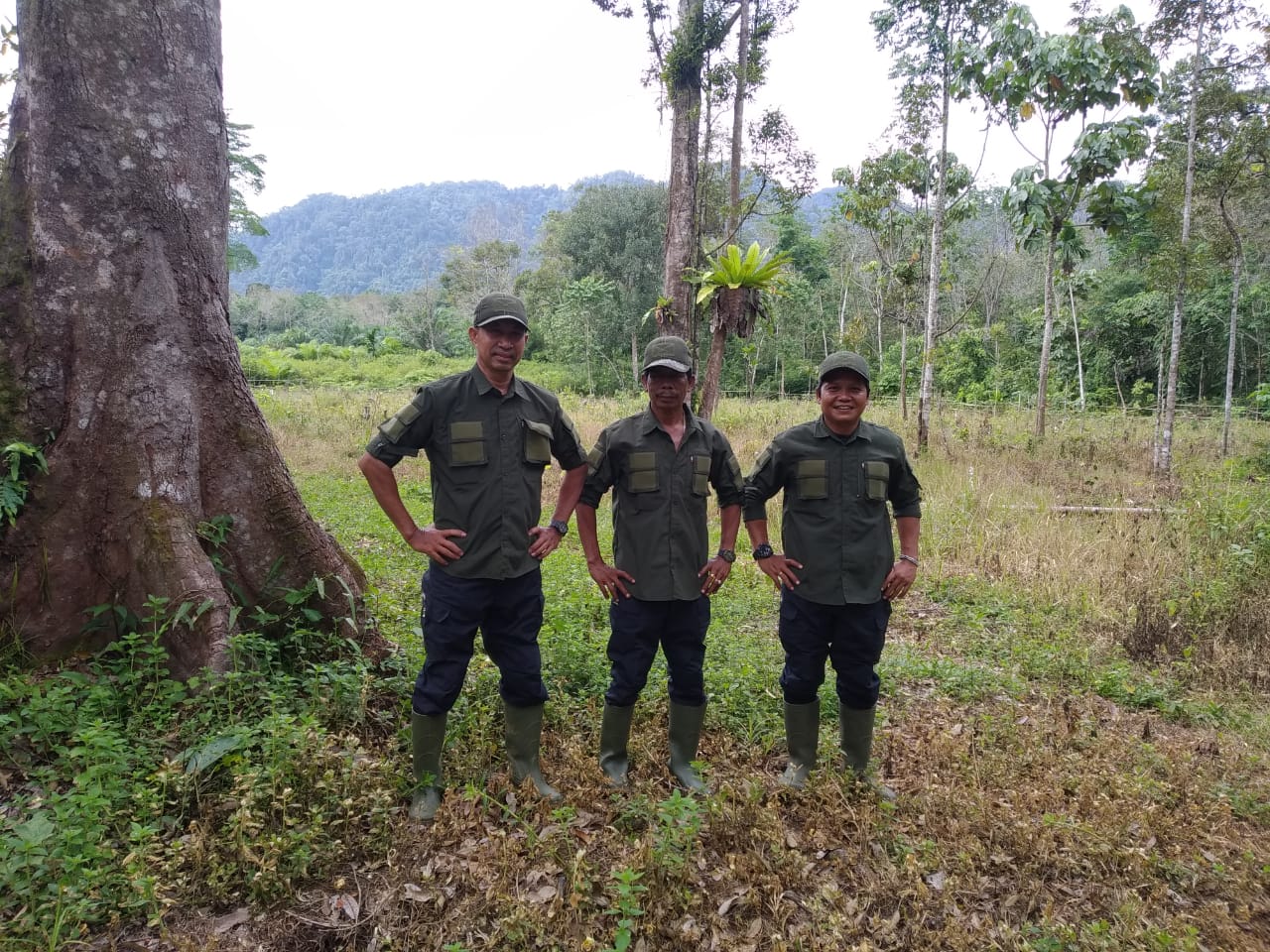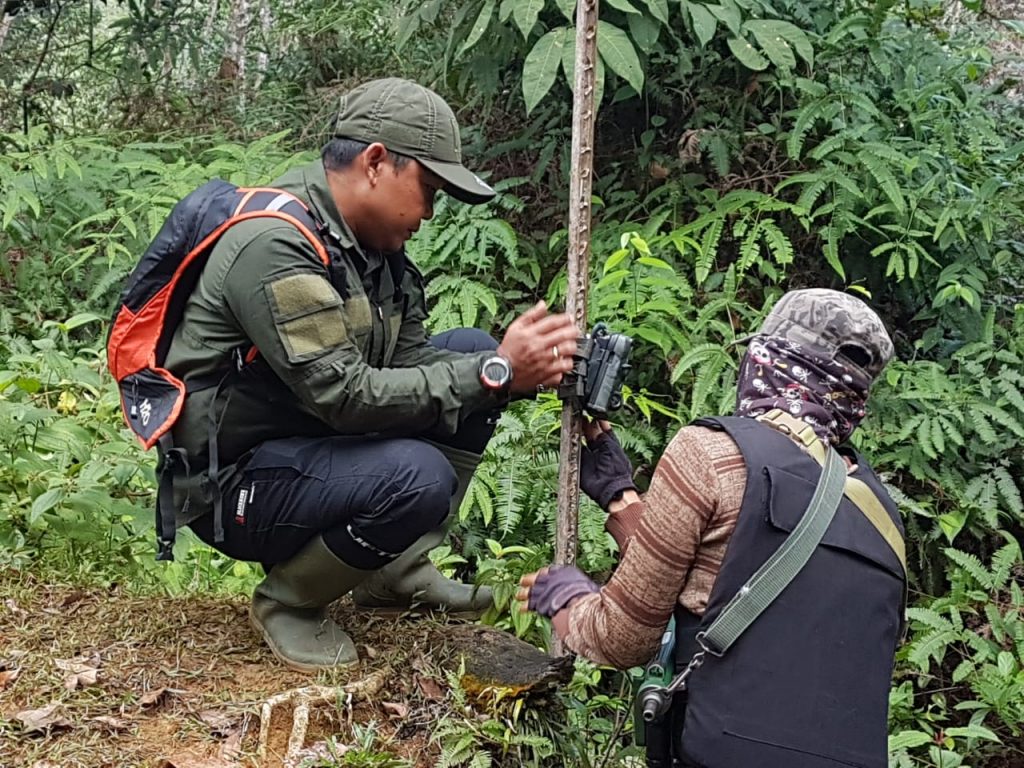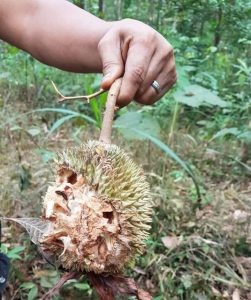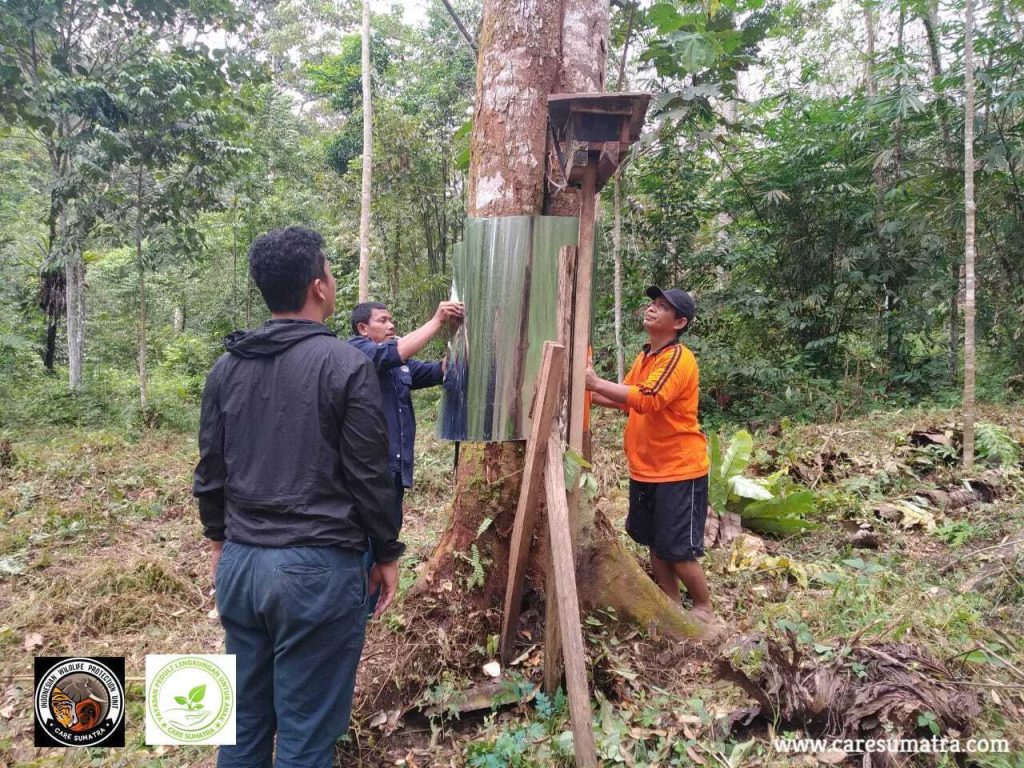
A former UN peacekeeper, Arie, works as a ranger for the Indonesian Wildlife Protection Unit (IWPU) in the province of North Sumatra. We sat down to talk with him about their work to protect nature and to reduce human-wildlife conflict in the Batu Kapal buffer zone situated at the edges of the UNESCO protected Leuser National Park.
***Update from 18 March 2022
On 18 March, we tragically lost Arie as he became critically ill and died without warning. He was an incredible ranger and a magnificent leader who mentored young rangers in a number of the North Sumatran teams. He was loved and respected by everyone who knew him and his loss is deeply felt within our team.
CareSumatra (CS): Arie, can you tell us more about the ranger project with IWPU? What’s the purpose of this program?
Arie: Our objective is to protect the fauna and flora of the Batu Kapal buffer zone and to reduce human-wildlife conflict through peaceful and sustainable solutions. Do you know what the buffer zone is?
CS: I believe the buffer zone is a biodiverse area found between the national park and human settlements. What is special about it?
Arie: Not many people know that the buffer zone is very important for nature. There are many special plants growing here, such as Rafflesia and Titan arum. There is also a great diversity of wildlife, including critically endangered Sumatran tigers and organutans.
The buffer zone does not have the same level of protection as the national park. So, we created a program to help the government protect nature in the buffer zone.

CS: How do you protect nature in the buffer zone?
Arie: Firstly, we patrol the area 14 days a month. During patrols, we install camera traps to monitor wildlife, dismantle snares and contain illegal poaching.
Secondly, we run social programs to educate local people in how to protect nature. Unfortunately, due to the pandemic all social programs totally stopped.

Arie: And finally, one of the key areas of our work is conflict mitigation. Together with local people and farmers we try to find peaceful solutions to reduce human-wildlife conflict.
CS: Why is there human-wildlife conflict in Sumatra?
Arie: The buffer zone is a special place where both people and wildlife interact. There is a lot of human activity in the buffer zone area, such as farming, which often leads to encounters between humans and wildlife.
Arie: Wild pigs and monkeys often come and destroy crops of local farmers. They are not protected animals and can be hunted, so we need to convince the farmers not to kill them.
It’s also common for orangutans to raid farmers’ crops, especially during durian season. Orangutans love durian fruit, which is one of their favourite foods, and they are easily attracted to the cultivated durian fruits in peoples’ gardens.

Arie: As part of our Durians for Orangutans project, we teach farmers how to protect their trees so that orangutans cannot climb them. And if it’s too late, we compensate farmers for their lost fruits.

Arie: Another key problem we have at the moment is human-tiger conflict. Local farmers in Indonesia let their livestock roam free without supervision. It’s good for farm animals to roam free, but on the other hand, this invites tigers who attack the cows.
We believe that another possible reason behind the human-tiger conflict is the fact that the number of Sumatran tigers in Gunung Leuser National Park is on the rise, which is a very positive discovery. However, a crowded forest means that some tigers may be forced to look for new territories.
We have one tiger that always comes to the buffer zone, and sometimes even to the local villages. During December and January, the same tiger killed 12 cows in the village.
CS: That’s a lot of trouble caused by one tiger! Do you know much about him?
Arie: It’s a juvenile 18-month-old tiger. We’ve monitored him since he was a little cub. He has a sister, although we’ve never seen her since she’s grown up. We’ve caught him a few times on video using our camera traps.
The reality of the situation is that the farmers’ livestock is being attacked by the tiger, which is why it’s so urgent to find peaceful solutions to this conflict.
CS: What are the solutions to the human-tiger conflict?
Arie: One option is to relocate the tiger to a different area of the park, but this is not an ideal solution, since tigers are territorial animals. We cooperate with the national park rangers and the government to catch and relocate him, but he is very smart and we haven’t been successful.
Another solution is to work with local farmers to prevent future conflict. We do this by trying to change people’s mindset and ways of behaviour. We tell the farmers to stay indoors at night and to corral their livestock. We’ve already provided four corrals to local farmers.
We also ask them to supervise their cows during the day and give them fireworks to scare the tiger away. In Texas, farmers ride horses to protect their livestock, so here, we encourage local farmers to be like cowboys in Texas. It’s a good habit!
CS: Are people supportive of your work and do you think it's possible to reduce human-wildlife conflict?
Arie: Indonesian people are easy-going. We know how to explain this problem to them, but sometimes we need to scare them with the law, which is very strict – an up to 5 year jail sentence for killing or harming a protected animal.
I’m optimistic. I believe that our conflict mitigation program is a win-win solution for people and wildlife. When you protect wild animals, you also need to protect the livestock and crops of the local farmers, especially during the pandemic, as it’s their only source of income.
This in my opinion is the best way to reduce human-wildlife conflict, and I see it working. Two years ago, we often found many snares and traps in the buffer zone, but since we started patrolling only one year ago, there are no more snares, traps, or hunters.
CS: Do you think that the attitudes to wildlife are changing in the region?
Arie: People are beginning to understand how important wildlife is – even the wild pig, or insects have a function in nature. Education and social projects are the key elements to changing values and reducing human-wildlife conflict. Sadly, due to Covid, we can’t continue this work for now.
However, there are positive outcomes from Covid as well, even though it’s a global disaster. When the pandemic erupted last year, the government closed all wildlife markets.
CS: What do you think that the broader community can be doing more to help, including people based abroad?
Arie: We need more support for our conflict mitigation projects. I am very concerned about the human-tiger conflict, because the tiger may attack humans once he cannot attack livestock.
We also need to protect our orangutans, especially during the Durian season in Autumn. We have so few orangutans and tigers left in the wild and Sumatra, with our Batu Kapal buffer zone, are one of their last strongholds, so we need to protect them. But we also must make sure that we are helping both, people and wildlife.
CS: Can you tell us more about yourself, Arie? What did you do before becoming a ranger?
Arie: I worked for the UN on six different peacekeeping missions all over the world, including in the Middle East, sub-Saharan Africa, and even Haiti, during the earthquake. My last two missions were in the DRC and Central African Republic.
CS: How is peacekeeping different from being a ranger and what made you change your career?
Arie: Trying to resolve conflicts between people is completely different to dealing with human-wildlife conflict. I’ve decided to change my career path because I love working with nature and I want to dedicate my life to protecting it. My military training has proved very useful for my career as a ranger, as there are a lot of transferable skills between the two jobs.

